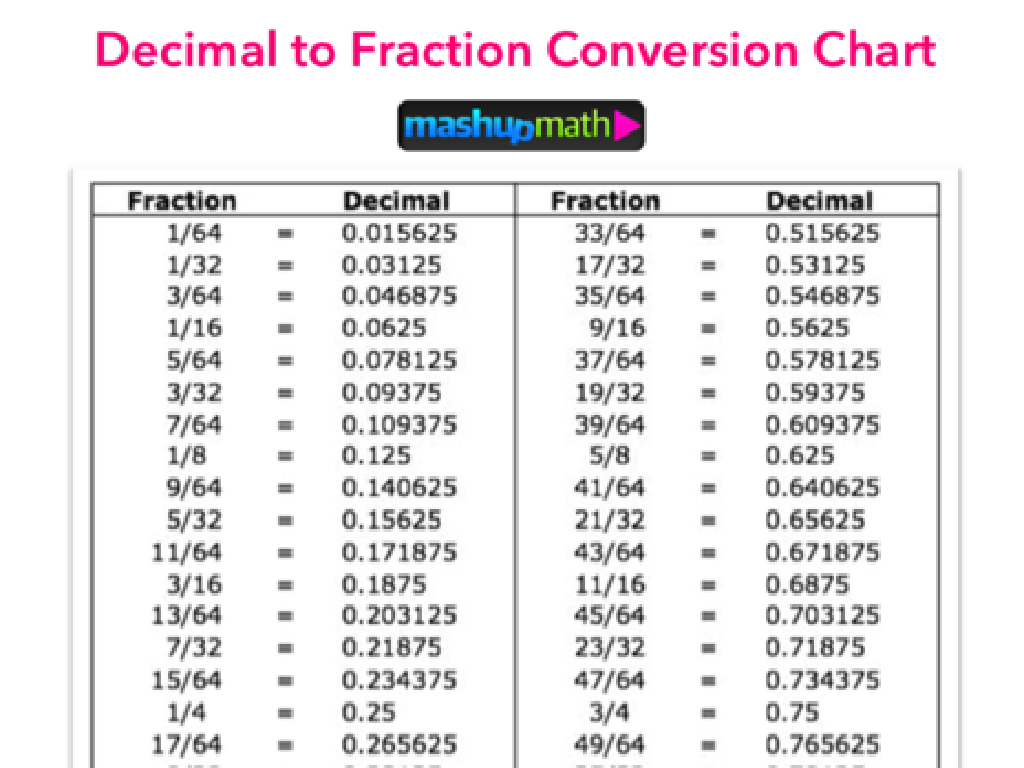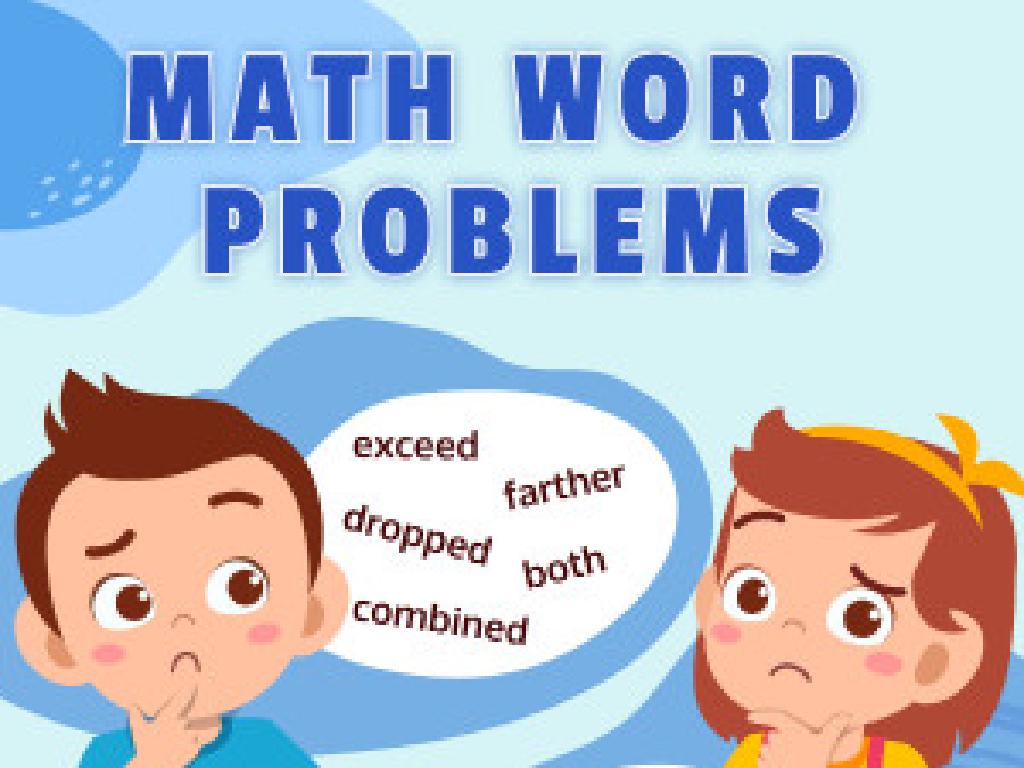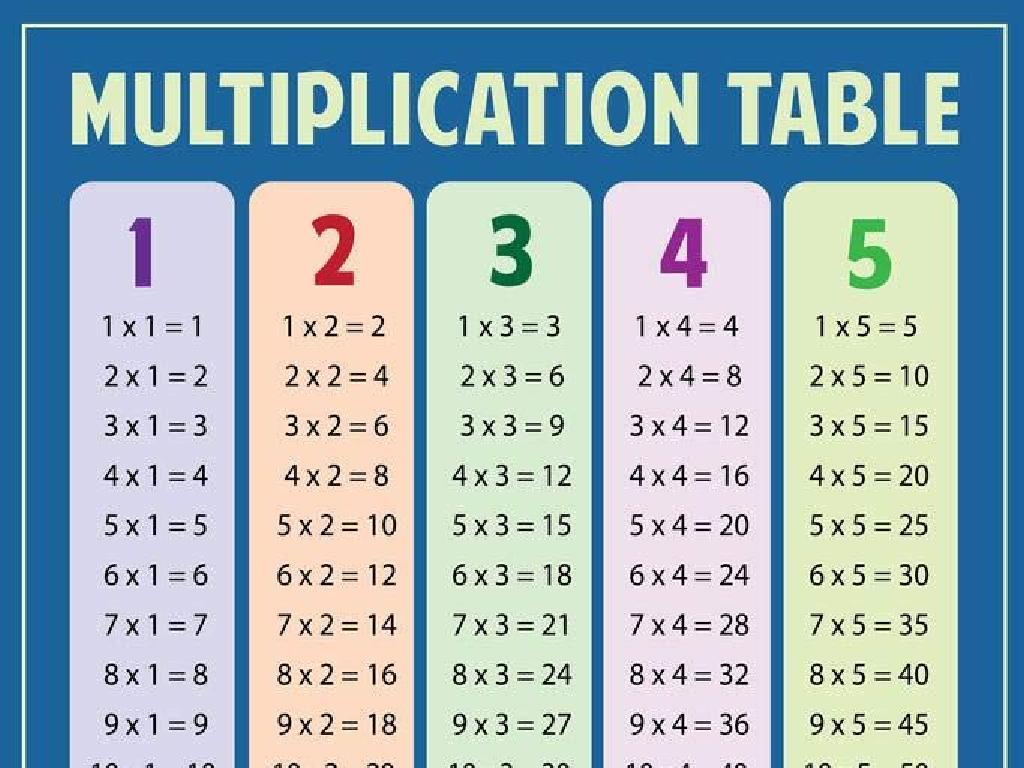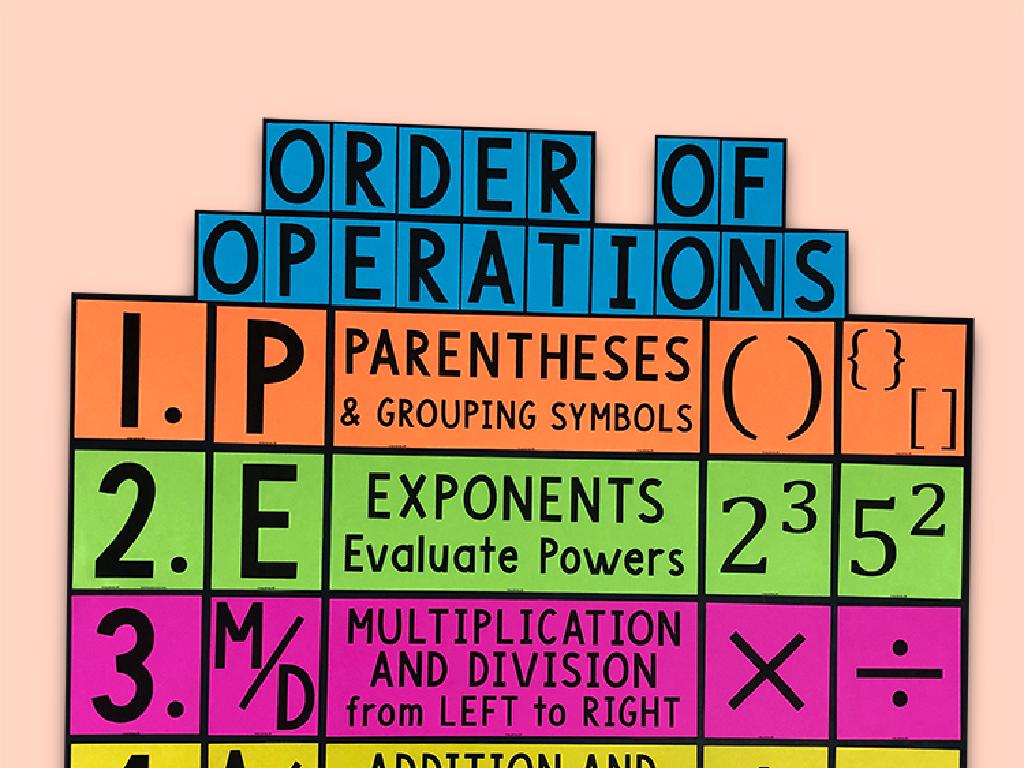Write A Two-Variable Equation
Subject: Math
Grade: Sixth grade
Topic: Two-Variable Equations
Please LOG IN to download the presentation. Access is available to registered users only.
View More Content
Welcome to Two-Variable Equations!
– Equations represent relationships
– Variables are unknowns in math
– Variables like x or y replace unknown numbers
– Two-variable equations basics
– Equations with two variables, e.g., y = 2x + 3
– Examples of two-variable equations
– Find the value of y when x is 1, 2, or 3
|
This slide introduces students to the concept of two-variable equations, a fundamental aspect of algebra. Start by explaining that equations are like puzzles that show how things are related. Variables, often represented by letters like x and y, stand in for numbers we don’t know yet. Introduce two-variable equations as equations that have two different variables. Provide simple examples, such as y = 2x + 3, and show how changing the value of one variable affects the other. Encourage students to think of real-life situations that could be represented by two-variable equations, like saving money over time or calculating the total cost of items bought. This will help them understand the practical applications of what they’re learning.
Understanding Two-Variable Equations
– Define an equation
– An equation is a statement that two expressions are equal, like a balance.
– Equations as math sentences
– Think of equations as sentences that tell us two things are the same.
– Simple equation examples
– For example, x + 3 = 7 or 2y = 10.
– Introduce two-variable equations
– Two-variable equations have two different letters, like x + y = 10.
|
Begin by defining an equation for the students, emphasizing that it’s a way to show that two things are equal, similar to a balance scale. Explain that equations can be thought of as mathematical sentences that communicate relationships between numbers and variables. Provide simple one-variable equation examples to illustrate the concept. Then, transition to introducing two-variable equations, explaining that they include two different variables and can represent more complex relationships. Encourage students to think of real-life situations that might be represented by two-variable equations, such as total cost with price and quantity as variables.
Understanding Variables in Equations
– Define a variable in math
– A variable is a symbol for a number we don’t know yet
– Representing variables with letters
– Use letters like x, y to stand for variables
– Variables in simple equations
– For example, x + 5 = 11, where x is the variable
– Practice with real examples
– Let’s solve x + y = 10, where both x and y are variables
|
This slide introduces the concept of variables in the context of two-variable equations. Begin by defining a variable as a symbol, typically a letter, that represents an unknown value in an equation. Explain that letters like x and y are commonly used to represent these unknowns. Provide simple one-variable equation examples to illustrate the concept, such as x + 5 = 11, and guide students to solve for x. Then, transition to two-variable equations, such as x + y = 10, and discuss how there can be multiple solutions. Encourage students to think of variables as placeholders that can be replaced with different numbers. The slide aims to build a foundation for understanding more complex equations involving two variables.
Introduction to Two-Variable Equations
– Defining two-variable equations
– Equations with two different variables, typically x and y.
– Understanding roles of x and y
– x and y represent unknowns that can vary.
– Real-world two-variable situations
– Examples: budgeting with income and expenses, or distance vs. time in travel.
– Practice with examples
|
This slide introduces the concept of two-variable equations, which are fundamental in algebra. Students will learn that these equations contain two different variables, commonly x and y, which can change and are related to each other. It’s crucial to explain that in real-life, these variables could represent various measurable quantities, such as money or distance. Provide examples like balancing a budget where income and expenses are variables, or calculating travel time with speed and distance as variables. Encourage students to think of other examples from their daily lives. The slide aims to build a foundation for understanding how two-variable equations model real-world situations and prepares students for solving such equations.
Writing Two-Variable Equations
– Steps for two-variable equations
– Understand the problem, choose variables, and form an equation.
– Identify variable relationships
– Look for how one thing affects another, like speed and time for distance.
– Create equations from words
– Translate the story problem into a mathematical sentence.
– Practice with examples
|
This slide introduces students to the concept of writing two-variable equations. Start by discussing the steps involved in forming an equation with two variables, emphasizing the importance of understanding the problem, choosing appropriate variables, and constructing an equation that represents the relationship. Highlight the need to identify how variables are related, such as how speed and time relate to distance traveled. Then, guide students through the process of turning word problems into mathematical equations, which is a critical skill in algebra. Provide practice problems for students to apply these concepts, and encourage them to work in pairs or groups to discuss their approaches to solving the problems.
Let’s Write Equations Together!
– Write an equation from a table
– Use table values to find relationships
– Write an equation from a word problem
– Understand the problem, identify variables
– Example 1: Table to equation
– E.g., Table shows hours (h) and earnings ($). Find rate per hour.
– Example 2: Word problem to equation
– E.g., ‘For every 2 apples sold, $5 is earned.’ Write an equation.
|
This slide is aimed at providing practice problems for students to apply their knowledge of writing two-variable equations. Start by guiding them on how to extract an equation from a set of data in a table, looking for consistent patterns or relationships between the two variables. Then, move on to translating a word problem into an equation by identifying the variables involved and the relationship between them. For example 1, provide a table with two columns representing two different variables and ask students to determine the equation that connects them. For example 2, present a word problem that describes a scenario where students need to find the relationship between two quantities and express it as an equation. Encourage students to share their thought process and solutions.
Class Activity: Equation Creation!
– Pair up and create word problems
– Write a two-variable equation
– Use variables like ‘x’ and ‘y’ to represent unknowns
– Solve your equation
– Find values for ‘x’ and ‘y’ that make your equation true
– Present to the class
|
This activity is designed to encourage collaborative problem-solving and application of two-variable equations. Students should pair up and think of a real-world situation that can be modeled with a two-variable equation. They should then write the equation and solve it. After solving, each pair will present their word problem, equation, and solution to the class. This will help students understand how equations are formed and solved in a fun and interactive way. Possible activities could include creating a budget, planning a party with a fixed number of guests and a cost per guest, or any scenario that involves two changing quantities. The teacher should circulate to offer guidance and ensure that each pair is on track with their problem creation and solution.
Wrapping Up: Two-Variable Equations
– Recap of two-variable equations
– Why master these equations?
– Understanding them is crucial for algebra success.
– Homework: 5 equation problems
– Solve problems from the textbook, page 47.
– Practice makes perfect!
– Keep practicing to improve your skills.
|
As we conclude today’s lesson on two-variable equations, it’s important to review the key concepts we’ve covered. Emphasize the importance of mastering this topic as it lays the foundation for more advanced algebra. For homework, assign five problems that involve solving two-variable equations, ensuring they are varied in difficulty to cater to all students. Encourage students to practice regularly as this will help solidify their understanding and ability to solve these types of equations. During the next class, we can review the homework answers and address any questions or difficulties the students may have encountered.





